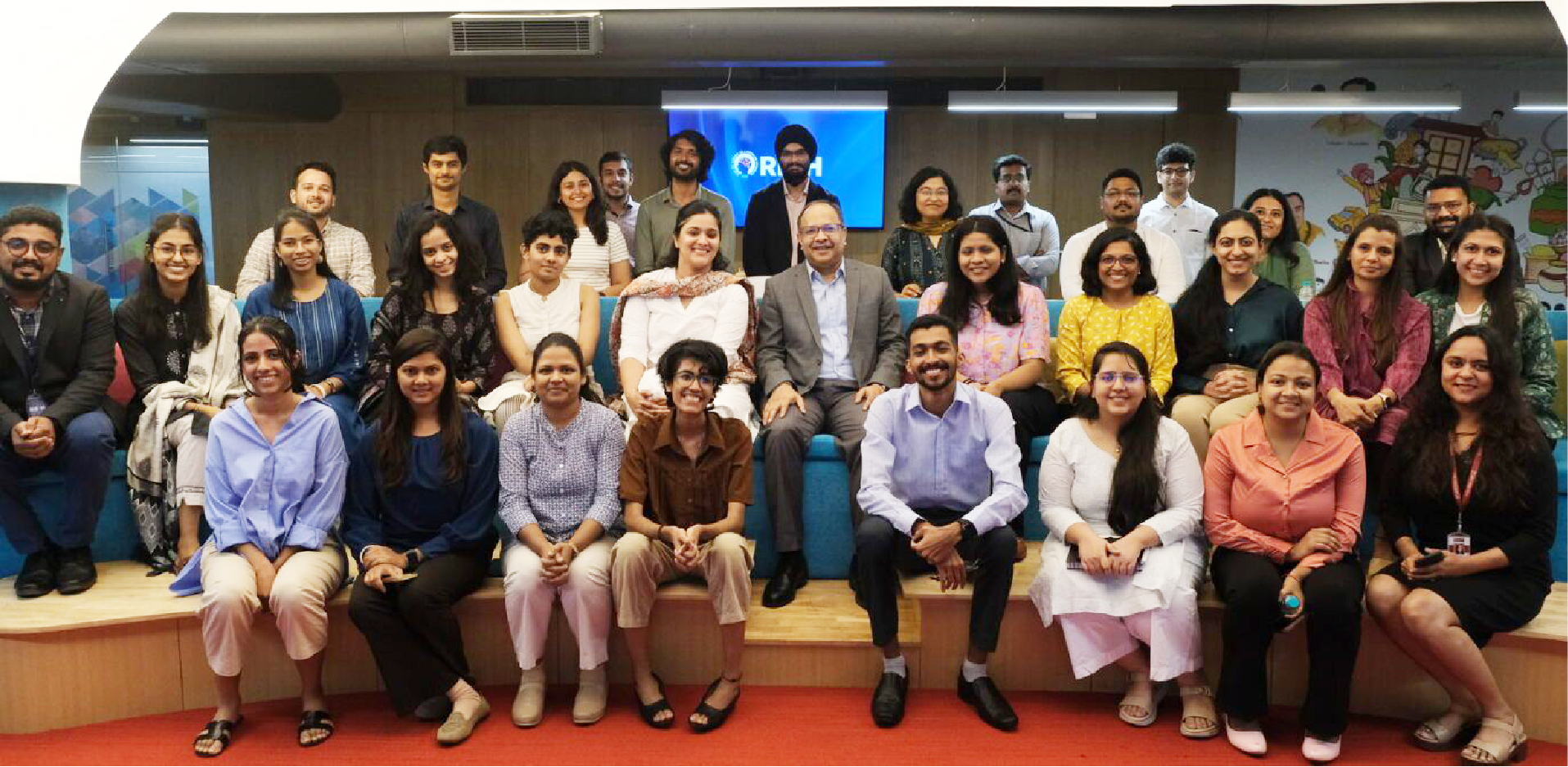
Less than a third of Generation Z (Gen Z) reports feeling financially secure, grappling with the challenges of high inflation, exorbitant college fees, and a competitive job market1. The financial landscape is evolving rapidly, and with each generation comes a unique perspective on money matters. Amongst the latest entrants to the world of financial decision-making, Gen Z2 stands out, navigating a complex environment shaped by digital advancements, economic uncertainty, and a consumption-led culture.

As part of its recent Swanari Dialogues, the Reserve Bank Innovation Hub organized a closed-door discussion between Gen Z individuals, banks, and fintechs, to gain insights into how Gen Z thinks about money. This blog aims to delve into key takeaways from the event, offering insights into how Gen Z approaches money matters and what financial institutions can do to effectively cater to this UPI-native tech-savvy generation.
This digital-first generation dislikes visiting their bank branch!
We noted that most of the Gen Z participants haven’t visited a physical bank branch or ATM over the last three years (at a minimum), and, of course, all of them prefer banking to be as convenient as dealing with as managing their finances on the go. While some participants expressed a preference for traditional banking due to a perceived lack of financial expertise and skepticism about online forms, there was notable dissatisfaction with paperwork and the performance of banking applications. Some participants shared the relationship manager being key to their banking experience, as they act as guides to this generation that’s just “adult-ing.” To effectively engage Gen Z, financial institutions must pivot towards seamless, paperless processes with user-friendly interfaces, incorporating a dash of personal touch.
The newer goal is to retire by 40, all thanks to Finfluencers!?
As videos on “how to retire by the age of 40?” or “calculate your FIRE (Financial Independence Retire Early) number” surface all over the internet, Gen Z’s financial milestones clearly diverge from those of previous generations. Most of them agreed that Finfluencers, aka finance influencers, and peer pressure have the most influence on their financial decisions; most of them started investing because their friends were, and a few even downloaded fintech apps because their favorite content creator asked them to do so. Recognizing this trend, financial institutions could explore collaborations with credible influencers to make their product better accessible to this generation, and we can only hope for fin-influencers to be responsible for what they advocate for their audience.
Consumerism, is there even an end?
With shopping at our fingertips and concepts like “retail therapy” floating amongst Gen Z, consumerism is seen as a source of dopamine (and all the good hormones). Gen Z confronts challenges in a consumer-driven world, but our participants displayed a proactive approach to budgeting. Many adhere to a percentage-based budgeting rule, allocating fixed portions of their income to spending, saving, and investing. Budgeting apps have become commonplace, enabling effective financial management. Financial institutions can support responsible spending by providing user-friendly budgeting tools and promoting financial education, acknowledging Gen Z’s affinity for credit, like no-cost EMI options, and their skepticism towards traditional lending models.
So how can fintechs design for Gen Zs?
A “simple and cool UI/UX” sums it up. Financial institutions must adopt a digital-first approach, eliminating manual processes while infusing digital platforms with a personal touch. The Swanari Dialogues noted that incentives for saving, credit customization based on creditworthiness, and goal-oriented approaches such as planning a trip to Vietnam that align with Gen Z’s preferences. Integrating saving and investing within the same accounts, presented as distinct pockets, resonates with their desire for simplicity. Most weren’t happy with their banking app, so it’s crucial to optimize existing bank apps to meet Gen Z’s expectations of frictionless and intuitive financial services.

In conclusion, although there is increased collaboration between FinTechs and banks, and despite the evident shifts in financial behaviors and aspirations amongst Generation Z, the FinTechs and banks appear to be lagging behind in fully embracing and catering to their unique needs. The reluctance to visit physical bank branches, reliance on digital platforms, and a preference for seamless, paperless processes indicate a clear demand for innovative, tech-driven financial solutions. While some fintech offerings exist, there remains a notable gap in understanding and responding to the specific expectations of Gen Z.
So, what’s our ask? Conscious effort.
Conscious effort towards making finance frictionless to (quite literally!) bank on the future generations. It is also imperative to understand the gender disparity among Gen Z’s use of financial services within India, and the RBIH aims to address these issues through effective collaboration. At this stage we look forward to working with partners to support frictionless banking services for the future generations.
